Scientific name Actinidia polygama Rank Species | Genus Actinidia Higher classification Actinidia | |
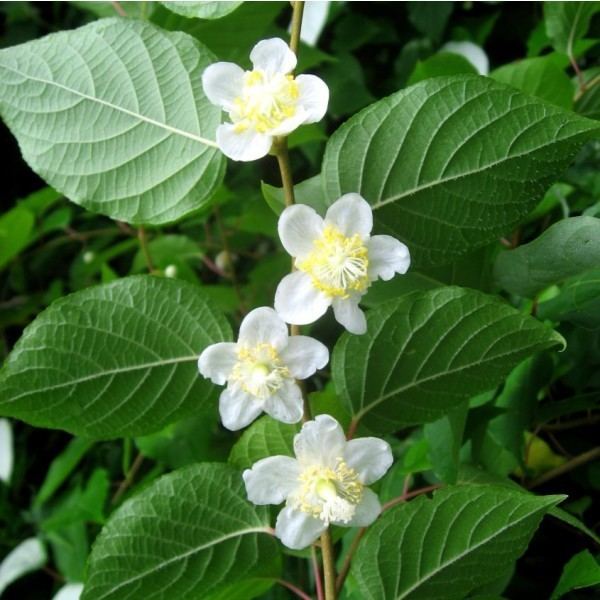 | ||
Similar Hardy kiwi, Actinidia, Catnip, Actinidiaceae, Actinidia kolomikta | ||
Actinidia polygama (also known as silver vine and cat powder) is a nontoxic plant in the Actinidiaceae family. It grows in the mountainous areas of Japan and China at elevations between 500 and 1900 m.
Contents
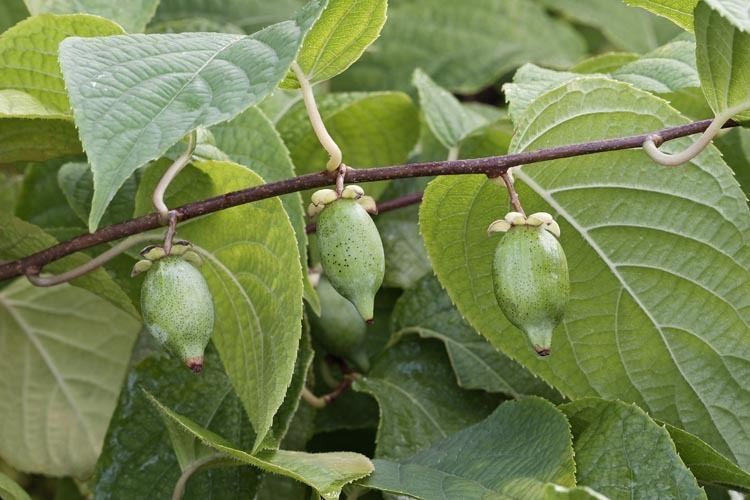
Silver vine can reach up to 5–6 m high at maturity. It is a deciduous climber and is frost tender. The petiole leaves are silver and white in color and 6–13 cm long and 4–9 cm wide. These colorful markings make the plant identifiable from afar, until the flowering season when the leaves turn completely green.
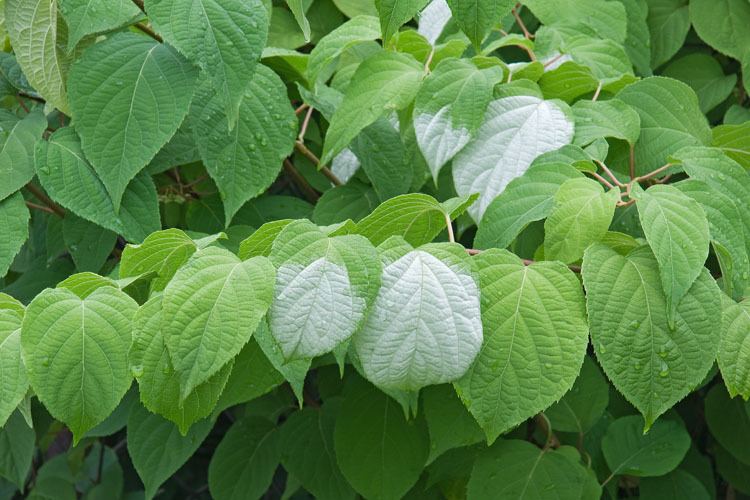
The flowering season lasts from late June to early July, in which the plant bears white flowers about 2.5 cm in diameter. The longevity of an individual flower is 2–3 d, when the plant also starts to develop small, yellow to yellow-red, egg-shaped, fleshy, and multiseeded fruits, which mature from September to October. The fruit is about 1.5 cm wide and 3.0–4.0 cm long. The inside of the fruit resembles the common kiwifruit, but it is orange in color rather than green.
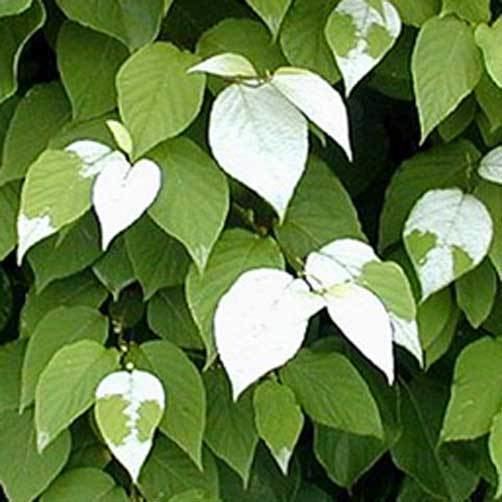
The silver vine plant requires moist, well-drained soil, and partial shade to full sun. This fast-growing vine makes for good cover on a fence or trellis. It is becoming increasingly popular as an edible fruit crop.
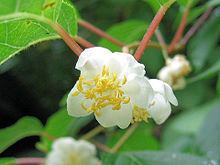
Traditional medicine

Silver vine has been used for its medicinal benefits for centuries. In traditional Chinese and Japanese medicine, it has been used for a wide range of health problems, including:

In Korean Buddhism, silver vine was soaked in traditional Korean sauces and used for diuresis, alleviation of pain, hypertension, genital troubles, and bronchitis.
It is said that:
“Old, weary travelers, (come) back to life to eat the fruit of [silver vine] and then continue their journey”.
Culinary
The fruit in the “acorn” shape can be salted and eaten raw, fried in oil, added to rice, or mixed with sesame seeds and mayonnaise to top salads. The fruit may also be fermented to make Matatabi sake and miso, a fruit wine, or used to extract the juice. The leaves, buds, and stems can also be ground into a powder or cut, steamed, and seeped to make tea. Adding mint or sugar can give variations in the tea.
Products
Grinding the leaves and stems into a coarser grind than needed for the tea makes Matatabi grass, which is used as bath salts. The vine is used as material for folk crafts, and the sap is collected to make lotions.
Pets
Silver vine has long been known to elicit euphoric response in cats. It is the most popular cat treat in Asia, thus sometimes cited in manga as matatabi. The reaction to silver vine is similar to the catnip response, but appears to be more intense. Typical behaviors include rolling, chin and cheek rubbing, drooling, and licking. The effect usually lasts between five and 30 minutes, and cats will usually visit silver vine again after about 20–30 minutes.
Health benefits
Silver vine has been used for centuries in Asia as a preventative health aid and is still commonly used as an alternative therapy for hypertension, arthritic pain, and was investigated as treatment for cancer. Researchers have claimed, "Silver vine should find applications in various fields of foods and medicals and will be increasingly regarded as a health-promoting food".
Silver vine leaves also have a high content of flavonoids, terpenoids, saponins, and beta-carotene. This plant is also rich in alkaloids. Its vitamin C content is 10 times higher than that of green tea, and was "much higher than those of fruit species such as garden strawberry, kiwi berry, haskap [berry], blueberry, and lemon". Silver vine also has as much vitamin E as found in soybeans.
The health benefits of silver vine are not limited to its natural vitamins and minerals. It may be an effective treatment for hyperlipidemia, and may have viability as an anticancer drug. When the leaf powder was given orally, it inhibited the spread of cancer in small animals and reduced tumor weight by more than 72% after day 32. Further, a lemon juice extract powder of silver vine tea showed hepatoprotection in rats which is attributed to antioxidant and free radical-scavenging properties.
The anti-inflammatory properties of this plant, used in the treatment of rheumatoid arthritis and to alleviate arthritis pain, were put to the test against inflammation in the lungs. Fruit extract from the plant had deep inhibitory effects on airway inflammation caused by allergic inflammation and asthma when combined with cyclosporine A.
